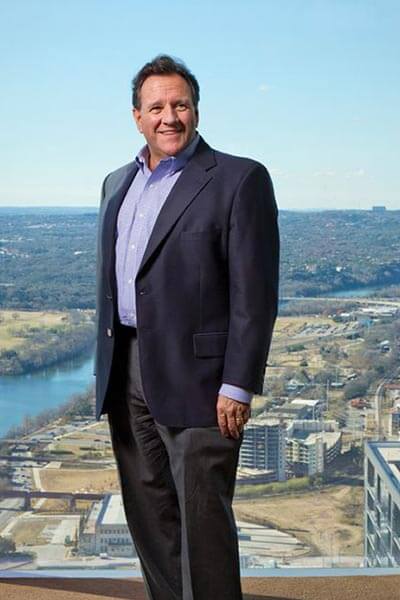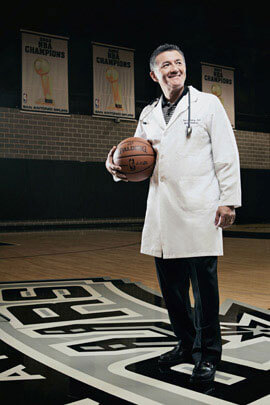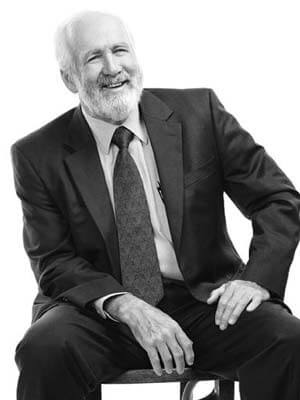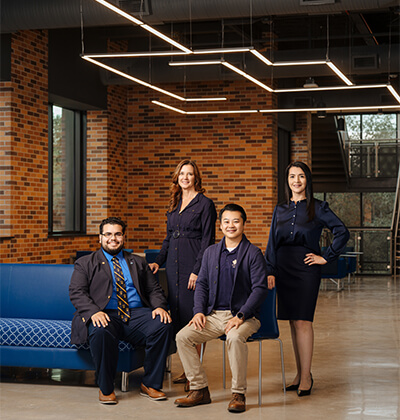
Terry Mitchell (J.D. ’83)
Terry Mitchell (J.D. ‘83) doesn’t want to talk about the woeful realities of modern city living, like stark landscapes and excessive traffic snarls. He would rather talk about his vision of what cities can be — communities with people who are mindful of their environment and their neighbors, with short commutes and all the perks an urban habitat can offer. To Mitchell, it’s not a tall tale; it’s his life’s work.
Mitchell is not your everyday real estate developer. He set out to be an architect, but instead became a banker and a lawyer. He earned business degrees from the University of Texas and St. Edward’s University before completing his law degree at the St. Mary’s University School of Law. He sees himself as a “student of architecture” drawn to beautiful and efficient design, but he credits his banking, real estate and law backgrounds for his success.
“I use my law school training every day, assessing risk, evaluating what is and what is not possible, and drafting contracts,” said Mitchell. “Most of all, I am a great researcher, thanks to law school. I’ll look at 60 projects to see what people value in order to create a new community.”
Revitalization, One Neighborhood at a Time
In 2003, Mitchell started Momark Development and began living his dream of revitalizing Austin and central Texas, one neighborhood at a time. He is passionate about neighborhoods with a broad range of housing options (from large family homes to smaller spaces for young singles or empty-nesters) and about how a well-functioning sense of community affects quality of life.
Mitchell believes that a neighborhood is not simply a conglomeration of houses with a common clubhouse, but a series of gathering places that enable human interaction among neighbors. “How do we make it feel like home for each demographic?” Mitchell asked. “We listen to what they value, whether it is time outdoors walking their dog or hip restaurants nearby, and we cater to those values.”
He also theorizes that by making urban home ownership affordable, he can place people back in the heart of the city, which will revitalize the city, improve quality of living and — a boon to everyone — reduce traffic.
“Creating huge housing developments on the outskirts of cities naturally causes terrible traffic problems. We need to move the workforce closer to their jobs,” he said.
Back to the City
Many of Mitchell’s projects concentrate on just that — moving the workforce back into the city. This includes building what he calls “vertical communities” with common green space and lower prices than what is generally offered in cities. Austin, which Mitchell calls home, is known for its high housing costs.
“We just completed a high-rise condo that appeals to empty-nesters as well as younger urban folks who want the emotional connection of a real community,” Mitchell said. “I take the potential buyers to the top floor with a 25-mile view. Their jaws drop. They can see 75 percent of the Austin metro area; they find it fascinating and know it is a special place to call home.”
The awe-inspiring view is nice, but it is just one of the unique draws to a project. Mitchell carefully researches and considers specific needs of each location and the groups he is serving. He judiciously plans everything from the flow of the neighborhood to unique features like a common backyard on one floor and a gym on another. He wisely uses the environment to provide more green space.
“Neighborhoods should be filled with a variety and range of homes filling different needs,” Mitchell said. “We are, as an industry, rediscovering that.”






